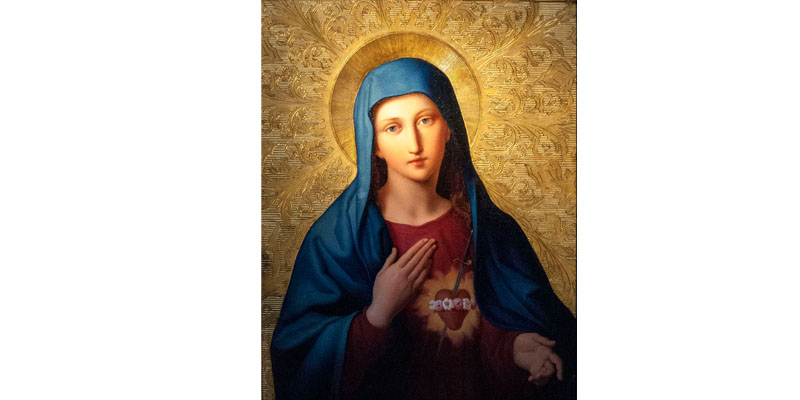“Who are you, O Immaculate Conception?”
“Let me be a fit instrument in your immaculate and merciful hands for introducing and increasing your glory to the maximum in all the many strayed and indifferent souls.”
These prayerful words were written by St. Maximilian Kolbe – a Polish Franciscan who died in a Concentration Camp during the Nazi regime. St. Maximilian was a great proponent of the veneration of Mary, especially her immaculate conception. The friar was ablaze with love for the heart of Mary and dedicated his life to spread her devotion.
He emphasized: “The words ‘You alone have destroyed all heresies in the whole world’ are taken from the divine Office which the Church requires priests to recite with regard to her. The Church speaks of ‘heresies,’ not ‘heretics,’ because she, Mary, loves them and on account of this love wants to free them from the error of heresy.”
This is the central mystery of the veneration of the Sacred hearts, Jesus’ and Mary’s, that is: The love of the heart goes beyond reason and beyond differences. Even if a believer does not understand everything about his faith perfectly, he can always take refuge by approaching the sacred hearts.
Historically, the devotion to Mary Immaculate Heart has its roots in the Gospel of St. Luke, where it is reported (twice) that Mary kept all things in her heart, that she might ponder over them. Also, Simeon prophesied to her during the presentation of Jesus in the Temple that her heart would be pierced with a sword. This prophecy would be fulfilled during the Passion of her son.
The devotion to the Heart of Mary began in the Middle Ages with St. Anselm of Canterbury and St. Bernard of Clairvaux. St. Bernard pondered on the most sorrowful moment of Mary under the cross:
“Or were those words, Woman, behold your Son, not more than a word to you, truly piercing your heart, cutting through to the division between soul and spirit? What an exchange! John is given to you in place of Jesus, the servant in place of the Lord, the disciple in place of the master; the son of Zebedee replaces the Son of God, a mere man replaces God himself. How could these words not pierce your most loving heart, when the mere remembrance of them breaks ours, hearts of iron and stone though they are!“
St Bernard touches upon one of the deepest mysteries: That Mary by adopting St. John became the mother of all. Her heart would be full of love not only for her child – Christ –, but also for her “foster-child”, St. John, and conversely for all mankind, i.e. for each and every person.
The French Oratorian priest, St. John Eudes (1601-1681), spread her devotion and had a feast celebrated in honor of the Heart of Mary (the first one in 1648) which then spread to a number of French dioceses. After a number of failed attempts in Rome, it was Pope Pius VII who in 1805 allowed the feast to the Immaculate Heart of Mary to enter the universal calendar.
The main difference to the devotion of the Sacred Heart of Jesus is that Jesus’ heart is the “divine heart” and thus loved for his overflowing love for humanity. In the devotion to the sacred Heart of Mary, the attraction lies in the love of her heart for Jesus and God.
According to Jean Bainvel, all is contained in her heart: her interior life, her joys and sorrows, her virtues and hidden perfections and her virginal love for God, her material love of her Divine Son and her motherly and compassionate love for all mankind, who are sinful and miserable children.
Despite her suffering and pain, no “knot” was formed in her heart against mankind. Mary’s love towards the murderers of her son is extended to all sinners, to all of us. No knot of hopelessness or rebellion against God is anywhere to be found in her.
Loving the Immaculate Heart of Mary means to love the perfect model of the love of God. Only Mary’s heart is without blemish and therefore the perfect gateway to the heart of the Father himself. By participating in her love, all believers can participate in the love of the Father and the Son.
5/06/18. Jan Bentz

